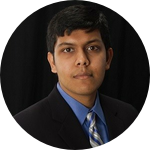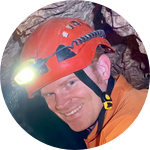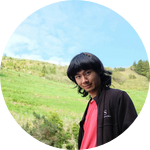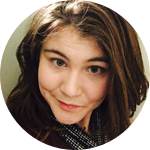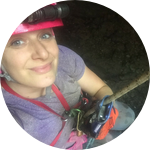About This Project
The Tongass National Forest in Alaska contains both damaged and undamaged caves. These caves are homes to a bacteria-rich mineraloid formation called moonmilk. Microbial communities play critical roles in maintaining ecosystem stability. This motivated our team of cavers and cave explorers to travel to remote field sites this summer to collect and analyze samples and attempt to answer the question: Does human-caused damage to cave formations change the moonmilk ecosystem?
Ask the Scientists
Join The DiscussionWhat is the context of this research?
As a regular caving trip-leader, I am used to pointing out to trip-participants every place in the cave where they could damage cave formations, usually by stepping on them with a muddy boot. Stepping on formations can break the formation, but if they don't break, sometimes the formations just get muddy. My trip participants astutely observed that the rest of the cave was full of mud, and asked me why this muddying mattered. As a biologist, I had read about how microbial communities have been linked to the growth and development of cave formations. I wondered if stepping on a cave formation had a real and measurable effect on the microbiological ecosystem. I started with moonmilk, a cave formation which is white, creamy, and rich in bacteria.
What is the significance of this project?
The Tongass National Forest is home to a dynamic and vulnerable karst ecosystem threatened by logging activities and by climate change (global impact of climate change on karst). We aim to better understand the resilience of the cave ecosystem by studying the biological diversity amongst several caves with varying levels of human exposure and damage. By measuring the microbial communities and how these communities change when formations are damaged, we can better understand how to protect and conserve these unique, societally and scientifically important caves.
What are the goals of the project?
In the summer of 2022, several experienced cavers, cave scientists, and I will go to Alaska for two weeks. We will visit 6 caves and select 8 sampling sites. Since our aim is to compare moonmilk that has suffered no human impact to damaged moonmilk, we will spend much of our time backpacking to remote sampling sites to sample caves where few humans have ever been. Because we will not be able to freeze bacteria at these remote sites, we will sequence these samples in the field. Field sequencing will allow us to capture rare species which might be lost if samples degraded during transport. Because few of these caves have been biologically inventoried, we may find we have more to report about alpine cave ecosystems in Alaska.
Budget
Most of our budget consists of consumables to aseptically collect samples, kits and reagents to extract and purify DNA, and flow cells to sequence in-the-field. Extraction and immediate sequencing is required for these experiments because our sampling sites are so remote that we will not have the ability to refrigerate or freeze the samples for several days after they have been collected. We plan to visit 8 sampling sites in 6 caves, we will collect 3 samples at each sampling site. The reagents in our budget will allow us to extract and sequence the DNA of these 24 samples.
We will collect moonmilk samples of known volume with biopsy punches, and resuspend them in 10mL of sterile water. The flow microscope we hope to build pumps water through an imaging chamber of known volume at a constant rate. We will use the flow microscope that we build to precisely count the number of cells in each cubic millimeter of moonmilk at every site.
Endorsed by
 Project Timeline
Project Timeline
We will travel to the Tongass National Forest in July 2022. Here, we will spend 2 weeks off-the-grid, sampling and sequencing damaged/undamaged moonmilk in a field lab. We will share notes and photos from the project when we are back online, in August 2022. We will share our initial data analyses in mid-September 2022. We will share our results with cavers in the December National Speleological Society Newsletter.
Mar 11, 2022
Project Launched
Jul 18, 2022
Travel to Tongass National Forest on Prince of Wales Island
Jul 20, 2022
First day of moonmilk sampling and field sequencing
Aug 31, 2022
Post pictures and experimental notes from sampling campaign
Sep 15, 2022
Initial analysis of project results
Meet the Team
Affiliates
Affiliates
Riley Drake
Curriculum Vitae
I work as a biologist at MIT, where I study pediatric malaria. I focus on understanding why, in some patients, the immune response to malaria can cause more illness and damage than the infection itself. In the past, I’ve researched the immune response to covid-infection, the diversity of immune cells in human breast milk, and worked to characterize circulating tumor cells, which can help cancers spread to other locations in the body. On weekends I can be found underground, either leading undergraduates through known caves, looking for caves, or mapping newly discovered caves.
Devra Heyer
Devra Has been a professional educator for over 15 years and a project caver even longer. She has experience teaching everything from biology to physics to cave mapping to technical rope techniques. She has Bachelors in both Chemistry and Biology, plus experience with biological collecting, inventorying, and data management during cave expeditions. Devra's first caving expedition was in 2007 and has participated in many remote caving expeditions including 5 expeditions to large isolated cave systems in China. She has basic competency in cave rescue, participating in classes put on by the NCRC, caving groups and the National Park Service. She currently works as the National Cave and Karst Research Institute’s Education Program Manager and the National Speleological Society’s Education Division Chief.
Project Backers
- 21Backers
- 102%Funded
- $6,395Total Donations
- $304.52Average Donation
